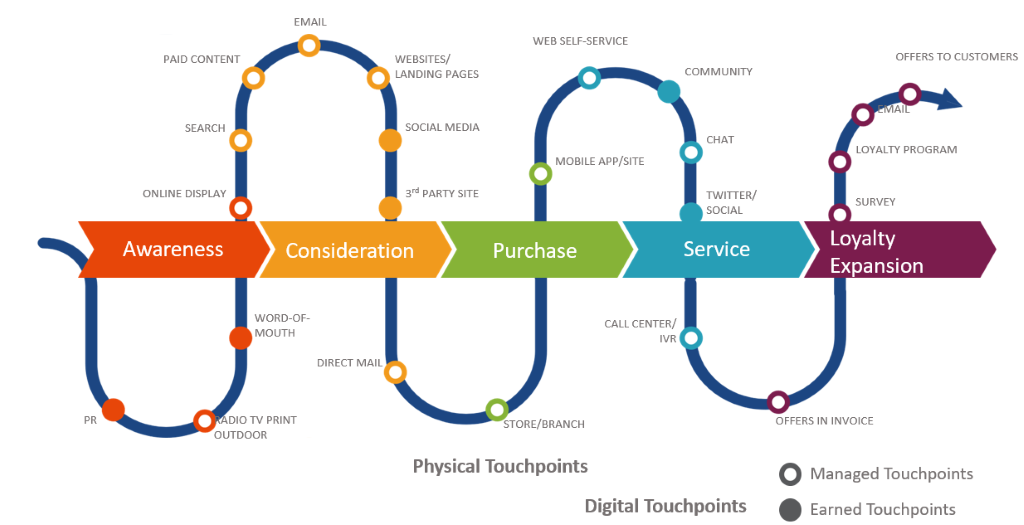Back in 2010 we were already producing more content in 2 days has had been created since 2003 – that was 12 years ago. During the course of the year there are thousands of events, emails, meetings, conferences, and more produced that drive content marketing and communications. How well is the content you are created aligned to the business outcomes you are trying to achieve? How well does this align with customer and employee engagement?
Most efforts are focused on events we prepare for, that bring people together, and that engages with content in one form or another. We should agree that we would benefit from establishing a content factory mindset with our teams aimed at aligning our content to specific business objectives, like increasing retention and customer acquisition, and improve the effectiveness of new product introduction.
So what is the first step to build this content factory? Start with the customer’s content engagement journey. Do an assessment of this journey and assess the performance of your touch points. Do this for a product or service. Map the customer/buyer or employee journey from first touch to the outcome you are trying to achieve such as a sales goal or increased engagement.

Source: Columbus
Establish a baseline for where a customer might touch your brand, from support, to sales, and to brand loyalty. Track it from your website’s content to your other content engagement points. Though most organizations are at different stages of maturity, having a starting baseline help you set priorities to improve what is most important.
How do you measure impact? In the past we measured how many views or how much time was spent consuming content but little was has been offered to define content quality based on the value of the information it delivers. We took a major step in this direction with content marketing and lead scoring but there is much more that can be done. Does the content increase retention, customer acquisition, drive product adoption and other business outcomes? Make a list of what is most impactful and which touch points are the most effective.
Today we continue to add new engagement points for customers – TikTok, the Metaverse, and others – that go beyond what we were paying attention to last year when we were learning how to adapt to virtual events. There is still a lot to build on just with virtual events.
The next stage of building your content factory is to determine where content exists that can drive business outcome. But more importantly, given budget cuts rolling through the industry, how can we repurpose what content we created? Activating this content in a way that increases engagement and reduces budget demand, and leaving more room to innovate to better engage needs to be the goal.
Please reach out. We’ll be glad to share tools to help you get started in building your content factory framework.
